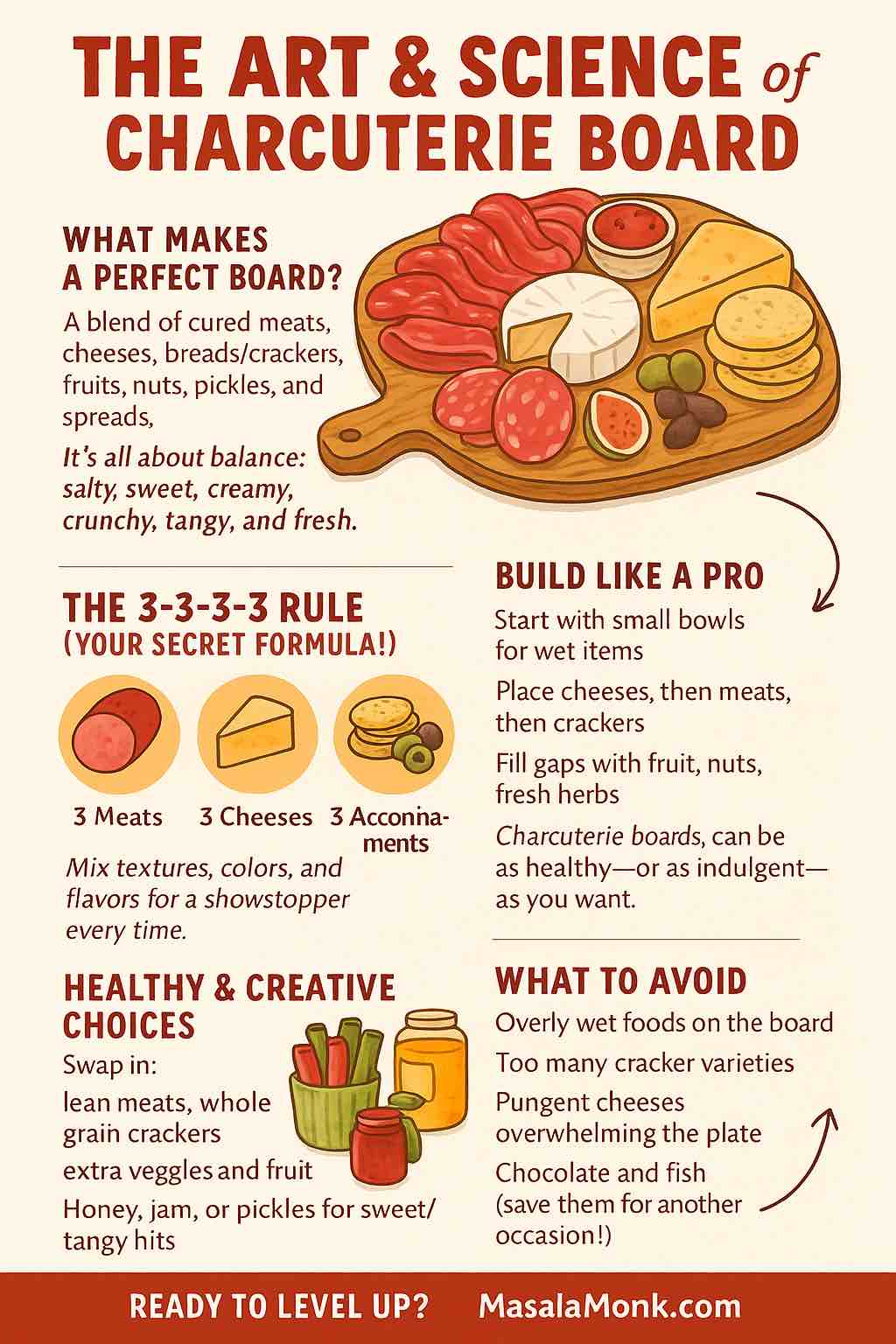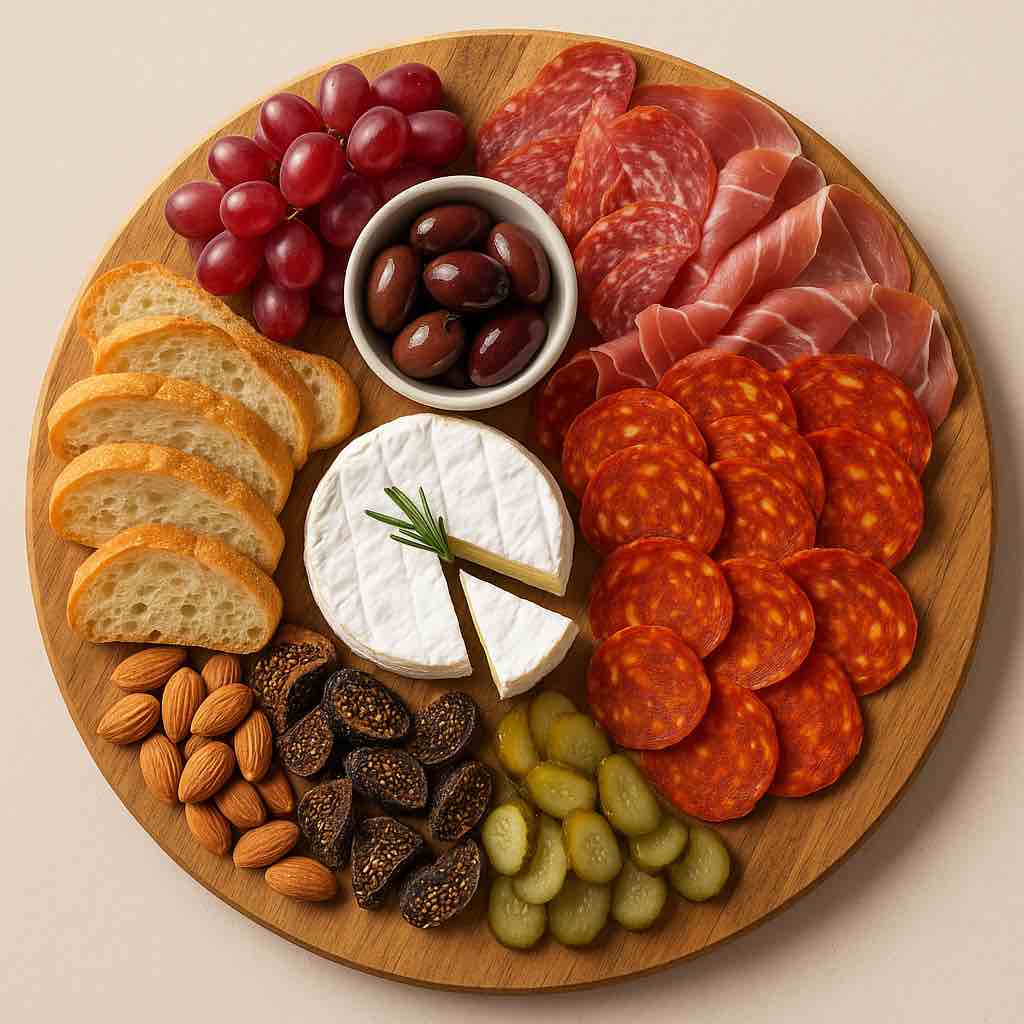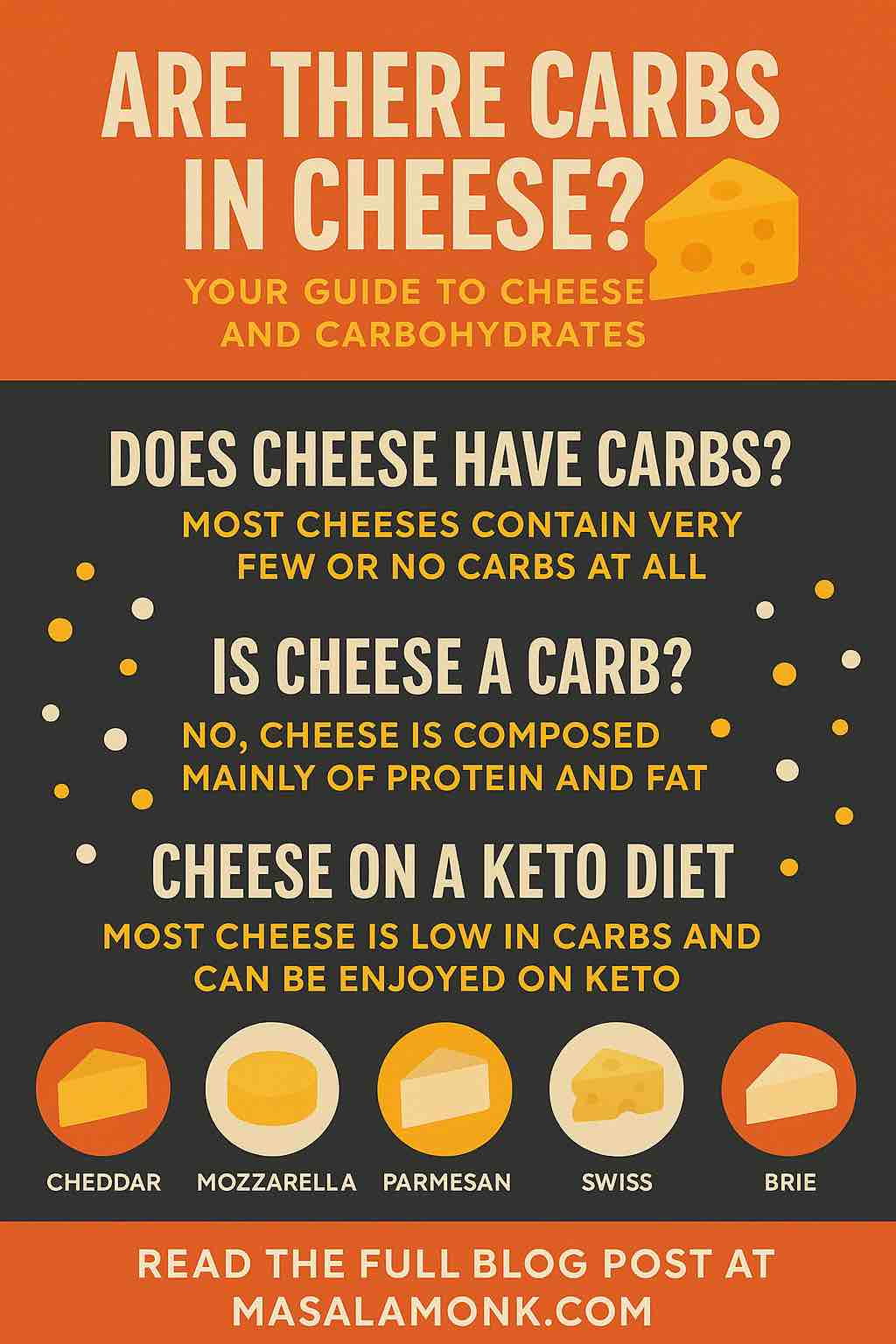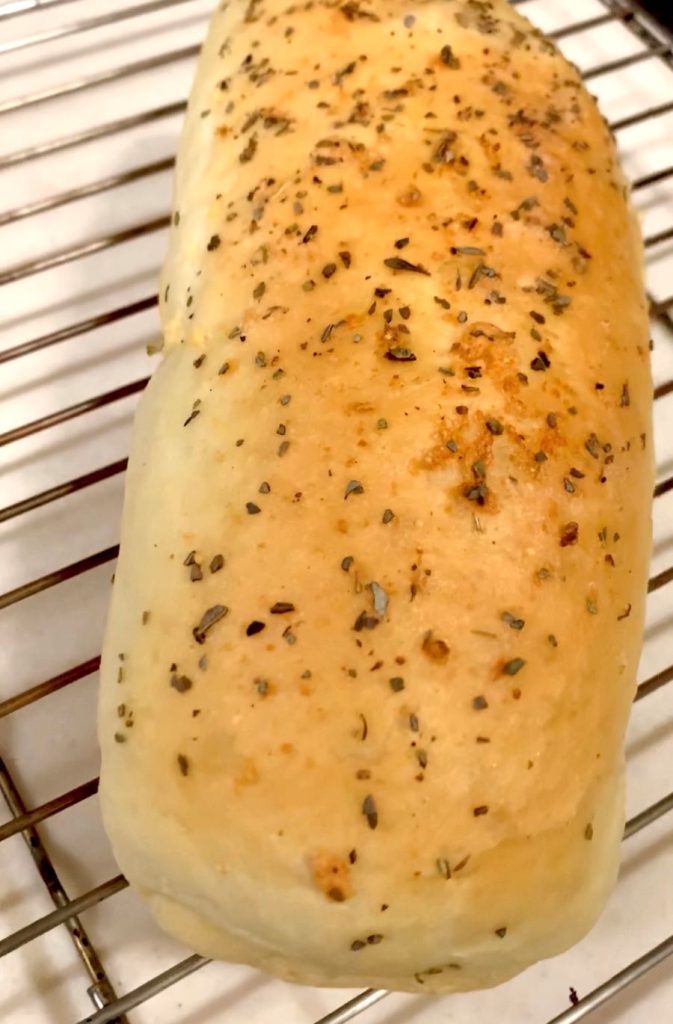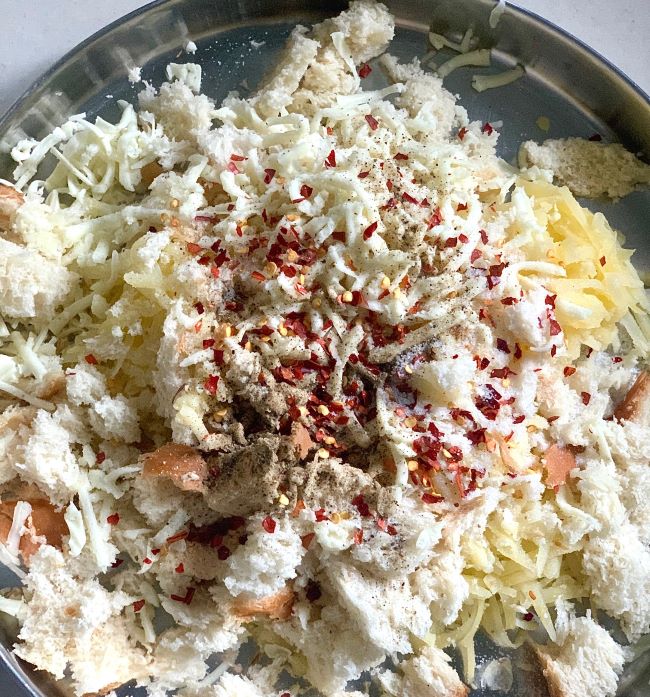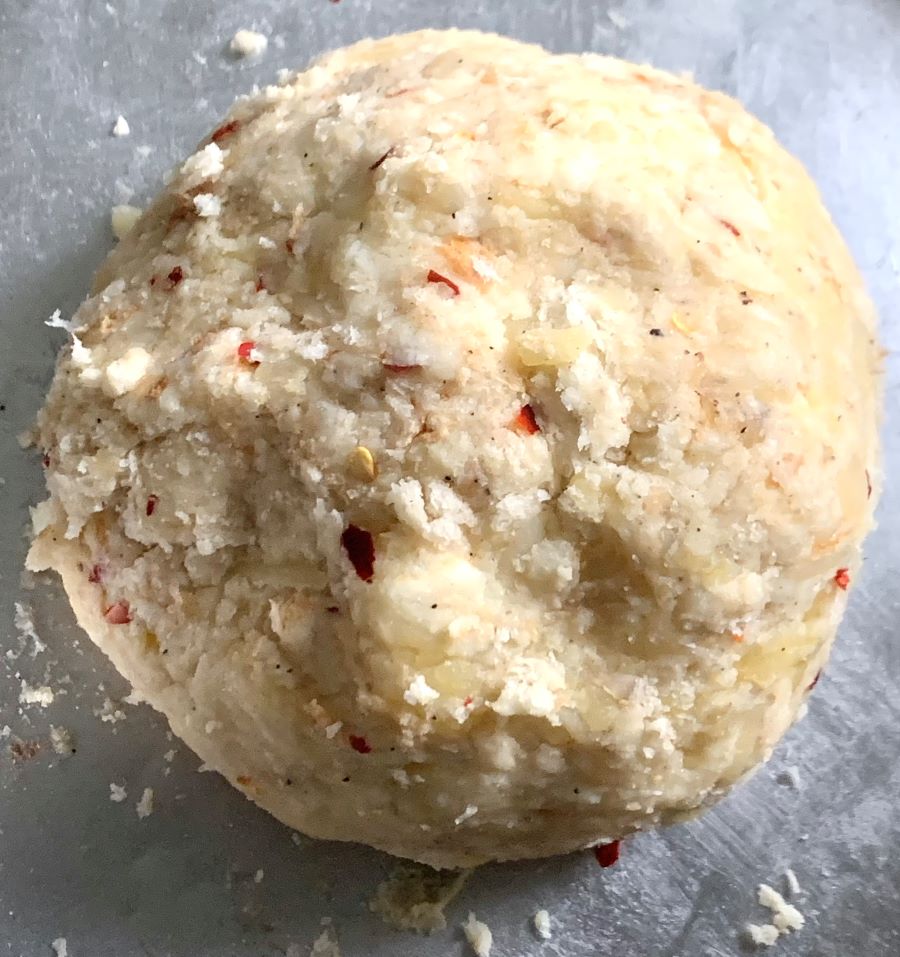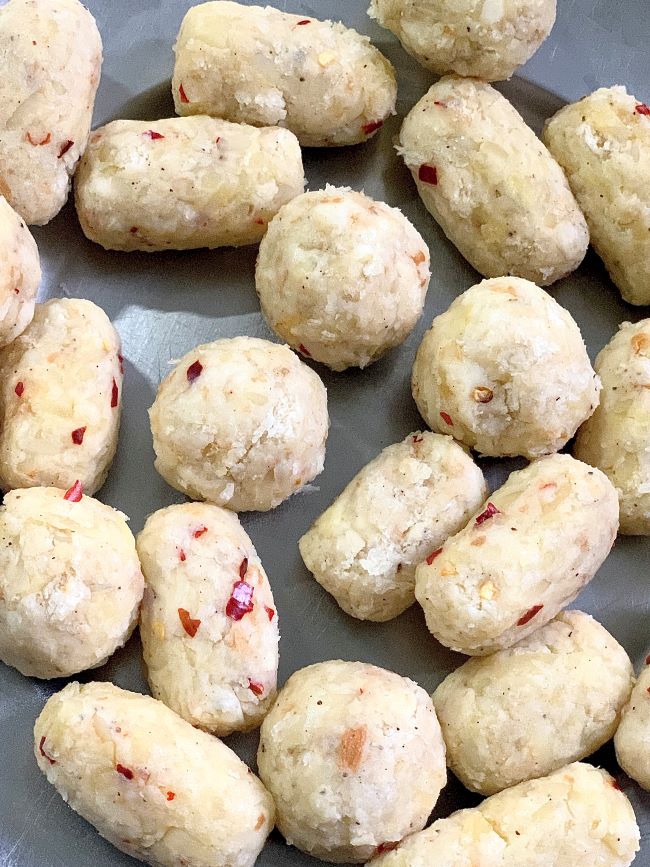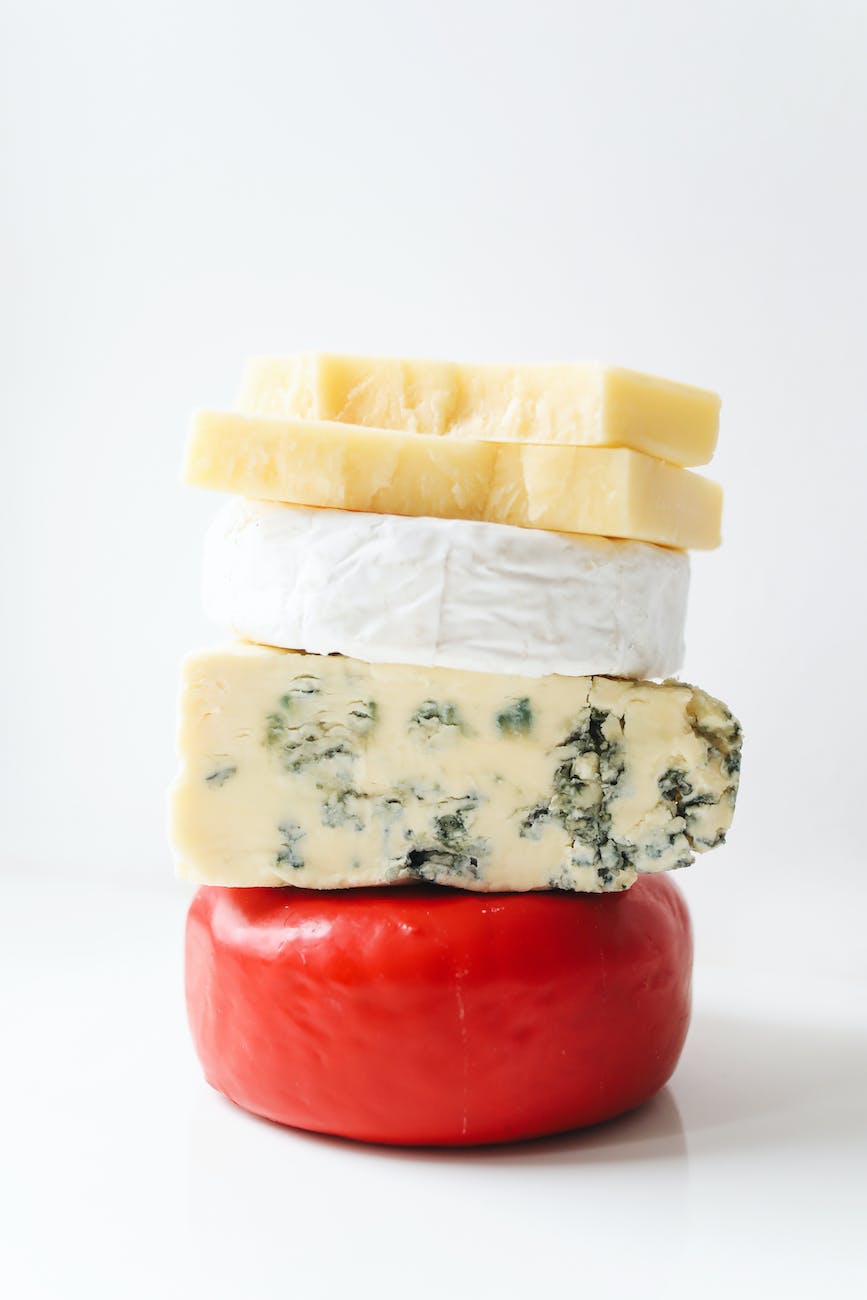
Embarking on a ketogenic journey can bring up many questions, especially when it comes to food choices. If you’re a cheese lover, you might be wondering, “Is cheese keto-friendly?” The ketogenic, or keto, diet is a low-carb, high-fat diet known for its potential weight loss and health benefits. But how does cheese, a beloved food for many, fit into this dietary plan?
In this comprehensive guide, we’ll delve into the fascinating world of cheese within the context of a ketogenic diet, providing you with the knowledge you need to make informed dietary decisions.
Is Cheese Keto-Friendly?
Cheese, with its creamy texture and rich flavors, is a favorite for many. But beyond its taste, cheese is also nutritionally dense. It’s packed with:
- High-quality protein
- Essential fats
- A variety of vitamins and minerals
But the question remains: Is it suitable for a keto diet?
The answer isn’t as straightforward as a simple yes or no. While cheese, with its high fat and moderate protein content and low carbohydrate count, aligns well with the nutritional requirements of a ketogenic diet, it’s essential to understand how to incorporate cheese into your diet effectively and healthily. Not all cheeses are created equal, and some are more keto-friendly than others.
Why is Cheese Keto But Not Milk?
Milk and cheese, both dairy products, seem similar, so why is cheese considered more keto-friendly while milk isn’t? The answer lies in their nutritional composition.
Milk contains lactose, a type of sugar, which contributes to its higher carb content. This makes it less suitable for a keto diet, which requires low-carb intake.
On the other hand, cheese, especially aged cheese, has less lactose due to the fermentation process. The bacteria used in the fermentation process consume most of the lactose, reducing the carb content of the resulting cheese. This makes cheese, particularly aged varieties, potentially more keto-friendly than milk.
In the following sections, we’ll explore different types of cheese and their compatibility with a keto diet, helping you make the best cheese choices for your keto journey.
[ez-toc]
Different Types of Cheese and Their Keto Compatibility
When it comes to the ketogenic diet, not all cheeses are created equal. Some cheeses, with their high fat and low carb content, fit perfectly into the keto framework. Others, particularly those that are heavily processed or contain added sugars, might not be as compatible. Understanding the nutritional content of different types of cheese can help you make informed decisions and keep your keto diet on track. Let’s delve into the keto compatibility of various types of cheese.
Is Feta Keto Friendly? 🧀
Feta, a tangy and crumbly cheese originating from Greece, is traditionally made from sheep’s or goat’s milk. It’s a staple in Mediterranean cuisine, often found in salads, pastries, and as a table cheese.
Feta Cheese Nutritional Content: Is It Low Carb?
Per 100 grams, feta cheese contains approximately:
- Fat: 21 grams
- Protein: 14 grams
- Carbs: 4 grams
Given its high fat, moderate protein, and low carb content, feta cheese can be a good fit for a ketogenic diet.
Health Benefits of Feta Cheese: Is It Good for Keto?
Feta cheese is a good source of calcium, which is important for bone health. It also contains beneficial probiotics, which can support gut health.
Potential Drawbacks of Feta Cheese on Keto
However, it’s also high in sodium, so those monitoring their sodium intake should consume it in moderation.
How to Include Feta Cheese in Your Keto Diet
Feta can be:
- Crumbled over salads
- Stirred into scrambled eggs
- Used as a topping for keto-friendly pizzas
- Enjoyed with olives and cucumber for a quick, keto-friendly snack
Shopping for Feta Cheese: What to Look for on Keto
When shopping for feta, look for versions made from sheep’s or goat’s milk for the most authentic flavor. Avoid versions that have added sugars or other non-keto-friendly additives.
In conclusion, feta is a flavorful and versatile cheese that can be enjoyed on a ketogenic diet. As with all foods, it should be consumed in moderation as part of a balanced diet.
Is Cottage Cheese Good for Keto? 🧀
Cottage cheese, known for its mild flavor and creamy texture, is a type of fresh cheese that’s a favorite in many diets. But how does it stack up in a keto diet?
Cottage Cheese Nutritional Content: Is It Keto-Friendly?
Per 100 grams, cottage cheese contains approximately:
- Fat: 4.3 grams
- Protein: 11 grams
- Carbs: 3.4 grams
While cottage cheese is higher in protein and lower in fat compared to other cheeses, its carb content is still relatively low, which could make it suitable for some people following a ketogenic diet.
Health Benefits of Cottage Cheese: Is It Good for Keto?
Cottage cheese is a good source of protein and calcium. It also contains probiotics that can support gut health.
Potential Drawbacks of Cottage Cheese on Keto
Cottage cheese is lower in fat compared to other cheeses, and some versions may contain added sugars or starches, which could increase the carb content. Always check the label when purchasing.
How to Include Cottage Cheese in Your Keto Diet
Cottage cheese can be:
- Enjoyed as a snack with a handful of nuts
- Used as a base for a savory dip
- Added to scrambled eggs for a protein boost
- Blended into a smoothie for extra creaminess
Shopping for Cottage Cheese: What to Look for on Keto
When shopping for cottage cheese, opt for full-fat versions and check the label for any added sugars or starches.
In conclusion, while cottage cheese is lower in fat and higher in carbs than some other cheeses, it can still be included in a ketogenic diet when consumed in moderation and as part of a balanced diet.
Is Cream Cheese Keto? 🧀
Cream cheese is a soft, mild-tasting cheese that’s often used in both sweet and savory dishes. But is it suitable for a ketogenic diet?
Cream Cheese Nutritional Content: Is It Low Carb?
Per 100 grams, cream cheese contains approximately:
- Fat: 34 grams
- Protein: 6 grams
- Carbs: 4 grams
With its high fat content and low carb content, cream cheese is a good fit for a ketogenic diet.
Health Benefits of Cream Cheese: Is It Good for Keto?
Cream cheese is high in fat, which can help meet the high-fat requirements of a ketogenic diet. It also provides a good amount of vitamin A.
Potential Drawbacks of Cream Cheese on Keto
While cream cheese is generally keto-friendly, some versions may contain added sugars or other non-keto-friendly additives. Always check the label when purchasing.
How to Include Cream Cheese in Your Keto Diet
Cream cheese can be:
- Spread on a slice of keto bread
- Mixed into sauces for extra creaminess
- Used as a base for keto-friendly desserts
- Stuffed into keto-friendly jalapeno poppers
Shopping for Cream Cheese: What to Look for on Keto
When shopping for cream cheese, opt for full-fat versions and check the label for any added sugars or non-keto-friendly additives.
In conclusion, cream cheese, with its high fat content and low carb content, is a great choice for a ketogenic diet. As with all foods, it should be consumed in moderation as part of a balanced diet.
[ez-toc]
Is Cheddar Cheese Keto? 🧀
Cheddar cheese, known for its sharp flavor and firm texture, is a widely consumed cheese. But is it suitable for a ketogenic diet?
Cheddar Cheese Nutritional Content: Is It Low Carb?
Per 100 grams, cheddar cheese contains approximately:
- Fat: 33 grams
- Protein: 25 grams
- Carbs: 1.3 grams
With its high fat content and very low carb content, cheddar cheese is a great fit for a ketogenic diet.
Health Benefits of Cheddar Cheese: Is It Good for Keto?
Cheddar cheese is high in fat and protein, which can help meet the macronutrient requirements of a ketogenic diet. It also provides a good amount of calcium and vitamin A.
Potential Drawbacks of Cheddar Cheese on Keto
While cheddar cheese is generally keto-friendly, some versions may contain added sugars or other non-keto-friendly additives. Always check the label when purchasing.
How to Include Cheddar Cheese in Your Keto Diet
Cheddar cheese can be:
- Grated over a salad or keto-friendly chili
- Melted into a keto-friendly cauliflower bake
- Sliced and served with keto-friendly crackers
- Used to make a keto-friendly cheese sauce
Shopping for Cheddar Cheese: What to Look for on Keto
When shopping for cheddar cheese, opt for natural, full-fat versions and check the label for any added sugars or non-keto-friendly additives.
In conclusion, cheddar cheese, with its high fat content and very low carb content, is an excellent choice for a ketogenic diet. As with all foods, it should be consumed in moderation as part of a balanced diet.
Is Mozzarella Cheese Keto Friendly? 🧀
Mozzarella cheese, famous for its use in pizza and pasta dishes, is a soft and mild-tasting cheese. But is it suitable for a ketogenic diet?
Mozzarella Cheese Nutritional Content: Is It Low Carb?
Per 100 grams, mozzarella cheese contains approximately:
- Fat: 22 grams
- Protein: 22 grams
- Carbs: 2.2 grams
With its high fat content and low carb content, mozzarella cheese is a good fit for a ketogenic diet.
Health Benefits of Mozzarella Cheese: Is It Good for Keto?
Mozzarella cheese is high in protein and calcium. It also provides a good amount of vitamin B12.
Potential Drawbacks of Mozzarella Cheese on Keto
While mozzarella cheese is generally keto-friendly, some versions, especially pre-shredded ones, may contain added starches or other non-keto-friendly additives. Always check the label when purchasing.
How to Include Mozzarella Cheese in Your Keto Diet
Mozzarella cheese can be:
- Used as a topping for keto-friendly pizzas
- Sliced and served with tomatoes and basil for a caprese salad
- Melted into a keto-friendly eggplant lasagna
- Used to make a keto-friendly cheese sauce
Shopping for Mozzarella Cheese: What to Look for on Keto
When shopping for mozzarella cheese, opt for natural, full-fat versions and check the label for any added sugars or non-keto-friendly additives.
In conclusion, mozzarella cheese, with its high fat content and low carb content, is a great choice for a ketogenic diet. As with all foods, it should be consumed in moderation as part of a balanced diet.
[ez-toc]
Is Swiss Cheese Keto? 🧀
Swiss cheese, recognized by its distinctive holes and mild, nutty flavor, is a popular choice in sandwiches and fondue. But is it suitable for a ketogenic diet?
Swiss Cheese Nutritional Content: Is It Low Carb?
Per 100 grams, Swiss cheese contains approximately:
- Fat: 27 grams
- Protein: 27 grams
- Carbs: 5 grams
With its high fat and protein content and low carb content, Swiss cheese is a great fit for a ketogenic diet.
Health Benefits of Swiss Cheese: Is It Good for Keto?
Swiss cheese is high in protein and calcium. It also provides a good amount of vitamin B12 and other essential nutrients.
Potential Drawbacks of Swiss Cheese on Keto
While Swiss cheese is generally keto-friendly, some versions may contain added sugars or other non-keto-friendly additives. Always check the label when purchasing.
How to Include Swiss Cheese in Your Keto Diet
Swiss cheese can be:
- Sliced and served in a keto-friendly sandwich
- Melted into a keto-friendly casserole
- Used in a keto-friendly fondue
- Enjoyed with cold cuts for a quick, keto-friendly snack
Shopping for Swiss Cheese: What to Look for on Keto
When shopping for Swiss cheese, opt for natural, full-fat versions and check the label for any added sugars or non-keto-friendly additives.
In conclusion, Swiss cheese, with its high fat and protein content and low carb content, is an excellent choice for a ketogenic diet. As with all foods, it should be consumed in moderation as part of a balanced diet.
[ez-toc]
Is Blue Cheese Keto? 🧀
Blue cheese, known for its strong flavor and blue or grey veins, is a favorite in salads and dips. But is it suitable for a ketogenic diet?
Blue Cheese Nutritional Content: Is It Low Carb?
Per 100 grams, blue cheese contains approximately:
- Fat: 29 grams
- Protein: 21 grams
- Carbs: 2 grams
With its high fat content and low carb content, blue cheese is a good fit for a ketogenic diet.
Health Benefits of Blue Cheese: Is It Good for Keto?
Blue cheese is high in calcium and protein. It also contains beneficial probiotics that can support gut health.
Potential Drawbacks of Blue Cheese on Keto
While blue cheese is generally keto-friendly, some people may be sensitive to the mold in blue cheese. Always check the label when purchasing.
How to Include Blue Cheese in Your Keto Diet
Blue cheese can be:
- Crumbled over a keto-friendly salad
- Melted into a keto-friendly steak sauce
- Used in a keto-friendly blue cheese dip
- Enjoyed with celery sticks for a quick, keto-friendly snack
Shopping for Blue Cheese: What to Look for on Keto
When shopping for blue cheese, opt for natural, full-fat versions and check the label for any added sugars or non-keto-friendly additives.
In conclusion, blue cheese, with its high fat content and low carb content, is a great choice for a ketogenic diet. As with all foods, it should be consumed in moderation as part of a balanced diet.
Is Pepper Jack Cheese Keto? 🧀
Pepper Jack cheese, known for its spicy flavor due to the addition of chili peppers and bell peppers, is a popular choice for adding a kick to dishes. But is it suitable for a ketogenic diet?
Pepper Jack Cheese Nutritional Content: Is It Low Carb?
Per 100 grams, Pepper Jack cheese contains approximately:
- Fat: 30 grams
- Protein: 25 grams
- Carbs: 1.5 grams
With its high fat and protein content and low carb content, Pepper Jack cheese is a great fit for a ketogenic diet.
Health Benefits of Pepper Jack Cheese: Is It Good for Keto?
Pepper Jack cheese is high in protein and calcium. It also provides a good amount of vitamin A.
Potential Drawbacks of Pepper Jack Cheese on Keto
While Pepper Jack cheese is generally keto-friendly, some versions may contain added sugars or other non-keto-friendly additives. Always check the label when purchasing.
How to Include Pepper Jack Cheese in Your Keto Diet
Pepper Jack cheese can be:
- Sliced and served in a keto-friendly sandwich
- Melted onto a bunless burger for a spicy kick
- Used in a keto-friendly jalapeno popper recipe
- Enjoyed with cold cuts for a quick, keto-friendly snack
Shopping for Pepper Jack Cheese: What to Look for on Keto
When shopping for Pepper Jack cheese, opt for natural, full-fat versions and check the label for any added sugars or non-keto-friendly additives.
In conclusion, Pepper Jack cheese, with its high fat and protein content and low carb content, is an excellent choice for a ketogenic diet. As with all foods, it should be consumed in moderation as part of a balanced diet.
Is Goat Cheese Keto? 🧀
Goat cheese, known for its creamy texture and tangy flavor, is a favorite in many diets. But is it suitable for a ketogenic diet?
Goat Cheese Nutritional Content: Is It Low Carb?
Per 100 grams, goat cheese contains approximately:
- Fat: 36 grams
- Protein: 22 grams
- Carbs: 2 grams
With its high fat content and low carb content, goat cheese is a good fit for a ketogenic diet.
Health Benefits of Goat Cheese: Is It Good for Keto?
Goat cheese is high in protein and calcium. It also contains beneficial probiotics that can support gut health.
Potential Drawbacks of Goat Cheese on Keto
While goat cheese is generally keto-friendly, some people may be allergic to goat’s milk. Always check the label when purchasing.
How to Include Goat Cheese in Your Keto Diet
Goat cheese can be:
- Crumbled over a keto-friendly salad
- Used in a keto-friendly stuffed chicken recipe
- Spread on a slice of keto bread
- Enjoyed with cucumber slices for a quick, keto-friendly snack
Shopping for Goat Cheese: What to Look for on Keto
When shopping for goat cheese, opt for natural, full-fat versions and check the label for any added sugars or non-keto-friendly additives.
In conclusion, goat cheese, with its high fat content and low carb content, is a great choice for a ketogenic diet. As with all foods, it should be consumed in moderation as part of a balanced diet.
[ez-toc]
Is Halloumi Keto?🧀
Halloumi, a semi-hard cheese from Cyprus known for its high melting point, is a popular choice for grilling. But is it suitable for a ketogenic diet?
Halloumi Cheese Nutritional Content: Is It Low Carb?
Per 100 grams, Halloumi cheese contains approximately:
- Fat: 25 grams
- Protein: 22 grams
- Carbs: 2 grams
With its high fat and protein content and low carb content, Halloumi cheese is a great fit for a ketogenic diet.
Health Benefits of Halloumi Cheese: Is It Good for Keto?
Halloumi cheese is high in protein and calcium. It also provides a good amount of vitamin A.
Potential Drawbacks of Halloumi Cheese on Keto
While Halloumi cheese is generally keto-friendly, it is high in sodium, so those monitoring their sodium intake should consume it in moderation. Always check the label when purchasing.
How to Include Halloumi Cheese in Your Keto Diet
Halloumi cheese can be:
- Grilled and served in a keto-friendly salad
- Used in a keto-friendly skewer recipe
- Fried and enjoyed as a snack
- Served with cucumber and olive oil for a quick, keto-friendly snack
Shopping for Halloumi Cheese: What to Look for on Keto
When shopping for Halloumi cheese, opt for natural, full-fat versions and check the label for any added sugars or non-keto-friendly additives.
In conclusion, Halloumi cheese, with its high fat and protein content and low carb content, is an excellent choice for a ketogenic diet. As with all foods, it should be consumed in moderation as part of a balanced diet.
Is Brie Keto?🧀
Brie, a soft cheese known for its creamy texture and mild flavor, is a favorite in many diets. But is it suitable for a ketogenic diet?
Brie Cheese Nutritional Content: Is It Low Carb?
Per 100 grams, Brie cheese contains approximately:
- Fat: 28 grams
- Protein: 21 grams
- Carbs: 0.45 grams
With its high fat content and very low carb content, Brie cheese is a great fit for a ketogenic diet.
Health Benefits of Brie Cheese: Is It Good for Keto?
Brie cheese is high in protein and calcium. It also provides a good amount of vitamin B12.
Potential Drawbacks of Brie Cheese on Keto
While Brie cheese is generally keto-friendly, some people may be sensitive to the mold in Brie cheese. Always check the label when purchasing.
How to Include Brie Cheese in Your Keto Diet
Brie cheese can be:
- Served with a keto-friendly charcuterie board
- Melted into a keto-friendly mushroom recipe
- Used in a keto-friendly baked brie recipe
- Enjoyed with celery sticks for a quick, keto-friendly snack
Shopping for Brie Cheese: What to Look for on Keto
When shopping for Brie cheese, opt for natural, full-fat versions and check the label for any added sugars or non-keto-friendly additives.
In conclusion, Brie cheese, with its high fat content and very low carb content, is an excellent choice for a ketogenic diet. As with all foods, it should be consumed in moderation as part of a balanced diet.
Is Mascarpone Keto?🧀
Mascarpone, an Italian cheese known for its creamy texture and sweet flavor, is a key ingredient in desserts like tiramisu. But is it suitable for a ketogenic diet?
Mascarpone Cheese Nutritional Content: Is It Low Carb?
Per 100 grams, Mascarpone cheese contains approximately:
- Fat: 47 grams
- Protein: 6 grams
- Carbs: 4 grams
With its high fat content and low carb content, Mascarpone cheese is a great fit for a ketogenic diet.
Health Benefits of Mascarpone Cheese: Is It Good for Keto?
Mascarpone cheese is high in fat, which can help meet the high-fat requirements of a ketogenic diet. It also provides a good amount of calcium.
Potential Drawbacks of Mascarpone Cheese on Keto
While Mascarpone cheese is generally keto-friendly, it is often used in sweet dishes that may contain added sugars. Always check the label when purchasing and be mindful of the other ingredients in your dish.
How to Include Mascarpone Cheese in Your Keto Diet
Mascarpone cheese can be:
- Used as a base for a keto-friendly dessert
- Mixed into a keto-friendly coffee for extra creaminess
- Used in a keto-friendly frosting recipe
- Enjoyed with berries for a quick, keto-friendly snack
Shopping for Mascarpone Cheese: What to Look for on Keto
When shopping for Mascarpone cheese, opt for natural, full-fat versions and check the label for any added sugars or non-keto-friendly additives.
In conclusion, Mascarpone cheese, with its high fat content and low carb content, is an excellent choice for a ketogenic diet. As with all foods, it should be consumed in moderation as part of a balanced diet.
[ez-toc]
Is Queso Keto?🧀
Queso, a Mexican cheese known for its creamy texture and spicy flavor, is a popular choice for dips and nachos. But is it suitable for a ketogenic diet?
Queso Cheese Nutritional Content: Is It Low Carb?
Per 100 grams, Queso cheese contains approximately:
- Fat: 25 grams
- Protein: 21 grams
- Carbs: 3.5 grams
With its high fat content and low carb content, Queso cheese is a good fit for a ketogenic diet.
Health Benefits of Queso Cheese: Is It Good for Keto?
Queso cheese is high in protein and calcium. It also provides a good amount of vitamin A.
Potential Drawbacks of Queso Cheese on Keto
While Queso cheese is generally keto-friendly, it is often used in dishes that may contain non-keto-friendly ingredients like tortilla chips. Always check the label when purchasing and be mindful of the other ingredients in your dish.
How to Include Queso Cheese in Your Keto Diet
Queso cheese can be:
- Used as a base for a keto-friendly dip
- Melted onto a keto-friendly taco salad
- Used in a keto-friendly enchilada recipe
- Enjoyed with celery sticks for a quick, keto-friendly snack
Shopping for Queso Cheese: What to Look for on Keto
When shopping for Queso cheese, opt for natural, full-fat versions and check the label for any added sugars or non-keto-friendly additives.
In conclusion, Queso cheese, with its high fat content and low carb content, is a great choice for a ketogenic diet. As with all foods, it should be consumed in moderation as part of a balanced diet.
Is Pimento Cheese Keto? 🧀
Pimento cheese, a Southern U.S. staple known for its creamy texture and piquant flavor, is a popular choice for sandwiches and dips. But is it suitable for a ketogenic diet?
Pimento Cheese Nutritional Content: Is It Low Carb?
Per 100 grams, Pimento cheese contains approximately:
- Fat: 31 grams
- Protein: 10 grams
- Carbs: 8 grams
While Pimento cheese has a higher carb content compared to other cheeses, it can still fit into a ketogenic diet when consumed in moderation.
Health Benefits of Pimento Cheese: Is It Good for Keto?
Pimento cheese is high in fat, which can help meet the high-fat requirements of a ketogenic diet. It also provides a good amount of calcium.
Potential Drawbacks of Pimento Cheese on Keto
While Pimento cheese is generally keto-friendly, it is often used in dishes that may contain non-keto-friendly ingredients like bread. Always check the label when purchasing and be mindful of the other ingredients in your dish.
How to Include Pimento Cheese in Your Keto Diet
Pimento cheese can be:
- Used as a base for a keto-friendly dip
- Spread on a slice of keto bread
- Used in a keto-friendly stuffed pepper recipe
- Enjoyed with celery sticks for a quick, keto-friendly snack
Shopping for Pimento Cheese: What to Look for on Keto
When shopping for Pimento cheese, opt for natural, full-fat versions and check the label for any added sugars or non-keto-friendly additives.
In conclusion, while Pimento cheese can be included in a ketogenic diet, it should be consumed in moderation due to its higher carb content and potential additives. As with all foods, it should be consumed as part of a balanced diet.
[ez-toc]
How to Incorporate Cheese into Your Keto Diet
Cheese is a versatile ingredient that can be incorporated into your keto diet in a variety of ways. Here are some tips to get you started:
- Portion Control: While cheese is keto-friendly, it’s also high in calories. Be mindful of your portion sizes to avoid consuming too many calories. A serving of cheese is typically around 1 ounce (28 grams).
- Pair with Other Keto-Friendly Foods: Cheese pairs well with many other keto-friendly foods. Try serving it with vegetables, nuts, or cold cuts for a quick and easy keto snack.
- Use as a Substitute: Cheese can be used as a substitute for high-carb ingredients in many recipes. For example, you can use a cheese crust for your pizza or use cheese to thicken your soups and sauces.
- Experiment with Different Types: There are many different types of cheese, each with its own unique flavor and texture. Don’t be afraid to experiment and try new varieties!
Potential Benefits and Drawbacks of Eating Cheese on Keto
Cheese can be a great addition to a keto diet, but it’s important to be aware of the potential benefits and drawbacks.
Benefits:
- High in Fat: Cheese is high in fat, which can help you meet your macros on a keto diet.
- Rich in Nutrients: Cheese is a good source of many nutrients, including calcium, protein, and vitamin B12.
- Satiating: The combination of fat and protein in cheese can help keep you feeling full and satisfied.
Drawbacks:
- High in Calories: Cheese is calorie-dense, so it’s important to watch your portion sizes.
- Potential for Overeating: Because cheese is so delicious, it can be easy to overeat. Be mindful of your intake to avoid going over your daily calorie limit.
- Not Suitable for Everyone: Some people may be lactose intolerant or allergic to dairy products, including cheese.
Caution: Not All Cheeses Are Keto-Friendly
While cheese can be a fantastic addition to a ketogenic diet, it’s crucial to understand that not all cheeses are created equal. Some cheeses, particularly processed cheeses and “cheese products,” may not be as beneficial or keto-friendly as others.
Processed Cheeses
Processed cheeses, also known as “cheese products,” are often made with a blend of cheese, milk, emulsifiers, and food coloring. They are engineered to melt well and have a long shelf life, but they often lack the nutritional benefits of natural cheese.
Processed cheeses can contain added sugars, artificial flavors, and preservatives, which can increase the carb content and make them less suitable for a ketogenic diet. They are also typically lower in protein and healthy fats compared to natural cheese.
Examples of processed cheeses include American cheese, cheese slices, cheese spreads, and cheese whiz.
Cheese-Like Products
Some cheese-like products are made with a variety of artificial ingredients and contain little to no actual cheese. These products are often marketed as low-fat or fat-free alternatives to regular cheese, but they can be highly processed and lack the nutritional benefits of real cheese.
These cheese substitutes can contain a variety of non-keto-friendly ingredients, including added sugars, artificial flavors, and preservatives. They may also contain trans fats, which have been linked to an increased risk of heart disease.
Examples of these cheese-like products include fat-free cheese slices, cheese-flavored snacks, and certain types of cheese dips and sauces.
What to Look for When Buying Cheese
When shopping for cheese, here are a few things to keep in mind:
- Check the Ingredients: Look for cheeses that list milk, cheese cultures, and enzymes as the main ingredients. Avoid cheeses with a long list of unfamiliar ingredients.
- Opt for Full-Fat: Full-fat cheeses are typically more keto-friendly than low-fat or fat-free alternatives.
- Avoid Added Sugars: Some cheeses, particularly flavored cheeses or cheese products, may contain added sugars. Check the nutrition label to ensure that the cheese is low in carbs.
In conclusion, while cheese can be a great addition to a ketogenic diet, it’s important to choose your cheese wisely. Opt for natural, full-fat cheeses and avoid highly processed or cheese-like products to get the most health benefits from your cheese.
[ez-toc]
Frequently Asked Questions about Cheese and Keto
- Can I eat too much cheese on keto?
While cheese is a keto-friendly food, it’s important to remember that it’s also high in calories. Overindulging in cheese could potentially lead to consuming more calories than your body needs, which might hinder your weight loss progress. It’s always a good idea to monitor your portion sizes and enjoy cheese as part of a balanced diet.
- What types of cheese should I avoid on keto?
Generally, most natural cheeses are keto-friendly. However, processed cheese products or cheeses with added sugars and high-carb ingredients should be consumed with caution. Always check the nutritional label when purchasing cheese.
- How can I tell if a cheese is keto-friendly?
A keto-friendly cheese typically has a high fat content, moderate protein, and low carbohydrate content. Checking the nutritional label is the best way to determine if a cheese fits these criteria. Also, watch out for any added sugars or non-keto-friendly ingredients.
- Is cheese a good source of protein on a keto diet?
Yes, cheese is a good source of protein. However, it’s also high in fat and should be eaten in moderation. Pairing cheese with other high-protein foods like meat or eggs can help ensure you’re getting enough protein on a keto diet.
- Can eating cheese help me feel fuller on a keto diet?
Cheese is high in fat and protein, both of which can help you feel fuller for longer. This can be especially beneficial on a keto diet, where maintaining a feeling of fullness can help prevent overeating.
- Are there any cheeses that are particularly good for a keto diet?
Cheeses that are high in fat and low in carbs, like Brie, Mascarpone, and Cheddar, are particularly good choices for a keto diet. However, the best cheese for you will also depend on your personal taste preferences.
- Can I use cheese as a replacement for high-carb foods on a keto diet?
Absolutely! Cheese can be a great substitute for high-carb foods in many dishes. For example, you can use a cheese crust for pizza or use cheese to thicken soups and sauces.
- Does cheese have any hidden carbs that I should be aware of?
Most natural cheeses are low in carbs. However, some processed cheese products may contain added sugars or other carb-rich ingredients. Always check the nutritional label to be sure.
- Is it possible to be allergic to cheese but still follow a keto diet?
Yes, it’s possible. If you’re allergic to cheese, there are many other high-fat, low-carb foods that you can enjoy on a keto diet. Always consult with a healthcare professional if you have any concerns about food allergies.
- Can I eat cheese at any time of the day on a keto diet?
Yes, cheese can be enjoyed at any time of the day on a keto diet. It can be a part of your main meals, used in snacks, or even included in your desserts.
- Is it okay to eat cheese every day on a keto diet?
While cheese can be enjoyed daily on a keto diet, it’s important to maintain a balanced diet with a variety of foods. Consuming a diverse range of foods can help ensure you’re getting a wide array of nutrients.
- Can cheese cause digestive issues on a keto diet?
Some people may experience digestive issues when consuming cheese, especially if they’re lactose intolerant. If you notice any digestive discomfort after eating cheese, it might be best to limit your intake or choose a lactose-free alternative.
- Does the type of milk used to make the cheese affect its keto-friendliness?
The type of milk used to make the cheese can influence its nutritional content, but most cheeses, whether made from cow’s milk, goat’s milk, or sheep’s milk, can fit into a keto diet due to their high fat and low carb content.
- Can I use cheese as a source of fat on a keto diet?
Yes, cheese is a great source of fat on a keto diet. It can help you meet your daily fat macro goals.
- Does cheese have any micronutrients that are beneficial for a keto diet?
Cheese is a good source of many micronutrients, including calcium, vitamin B12, phosphorus, and selenium. These nutrients are essential for overall health.
- Can I use cheese in keto baking?
Absolutely! Cheese can be used in a variety of keto baking recipes. For example, it can be used in keto bread recipes, keto muffin recipes, and even some keto dessert recipes.
- Is cheese a good snack option on a keto diet?
Yes, cheese can be a great snack option on a keto diet. Pair it with other keto-friendly foods like nuts or veggies for a satisfying and balanced snack.
- Can I eat cheese on a dairy-free keto diet?
If you’re following a dairy-free keto diet due to allergies or personal preference, you’ll want to avoid cheese. However, there are dairy-free cheese alternatives available that may fit into your diet.
- Does aging affect the carb content of cheese?
Aging can reduce the lactose (milk sugar) content of cheese, which in turn reduces its carb content. Therefore, aged cheeses are often lower in carbs than fresh cheeses.
- Can I eat cheese on a vegetarian keto diet?
Yes, cheese is both vegetarian and keto-friendly, making it a great food choice for a vegetarian keto diet. Just be sure to check the label as some cheeses use animal rennet in the production process.
Conclusion
Cheese can be a delicious and satisfying addition to a keto diet. With so many different types to choose from, there’s a cheese to suit every palate. Whether you prefer mild or strong, soft or hard, creamy or crumbly, there’s a keto-friendly cheese for you. Remember to enjoy cheese in moderation as part of a balanced diet, and don’t be afraid to experiment with new types and recipes. Happy cheese-eating!
